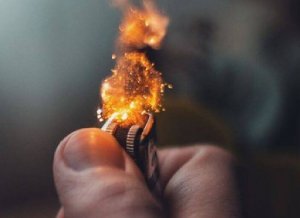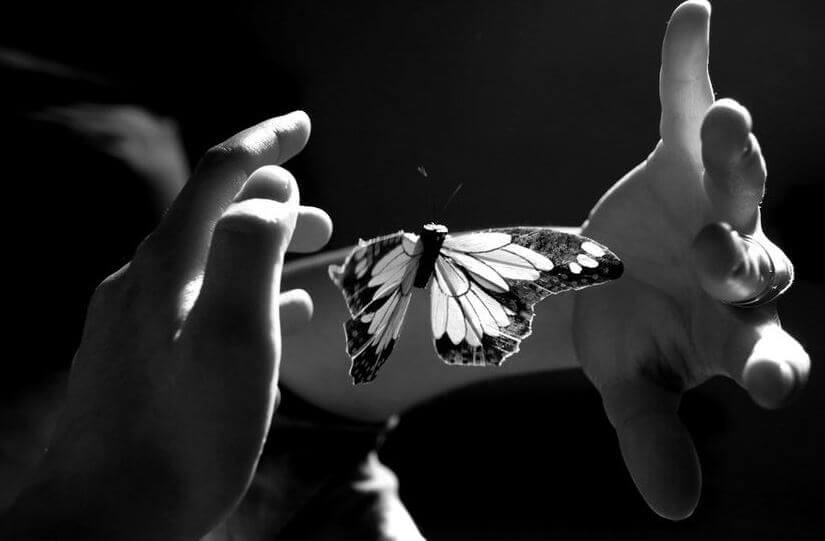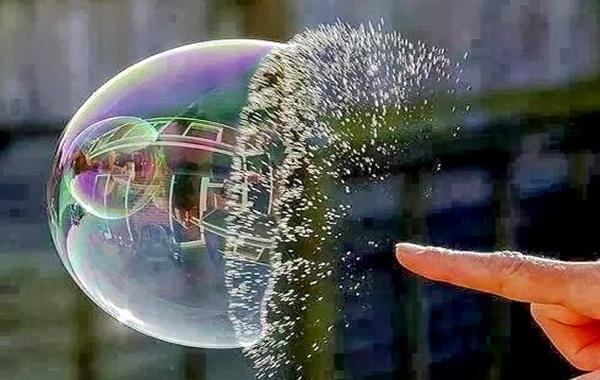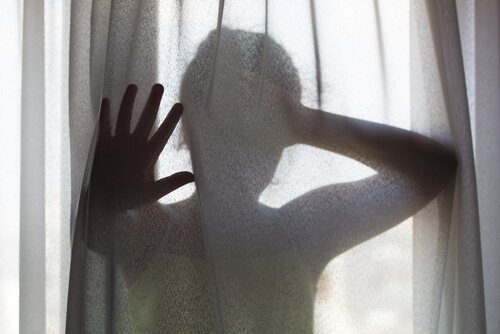Emotional Pain: The Anguish of Our Brain

When facing disappointment, a broken love, betrayal, a lie or the loss of a loved one we feel emotional pain. A wrenching pain that has taken shape for centuries in poems and songs full of suffering.
These poetic insights have gained support from neurophysiological studies which found that the metaphor of psychological pain caused by some kind of social or emotional loss is reflected in our brain circuits.
It is possible to know this thanks to the functional magnetic resonance imaging technique that helps us see which areas light up when our heart is broken and our emotions are burned.

The brain of emotional pain
Interestingly, it was found that the same brain areas that are activated when we suffer physical pain are also activated when something breaks inside us and traps the uneasiness and the most intense emotional pain.
Thus, in the experiment Eysenberg and his team devised a situation which encouraged people participating in the study to feel excluded, undervalued and distressed. This reflected changes in blood flow of two key brain areas:
- The anterior cingulate cortex is one area involved in the generation of the aversive experience of physical pain. It was found that the greater the anxiety, the greater the activity in this area.
- The prefrontal cortex was more inactive the lower the emotional pain was.
As we see, the anterior cingulate cortex promotes that we develop such feelings of anxiety, frustration and fear of emotional emptiness caused by loss, deceit or rejection. Meanwhile our prefrontal cortex regulates our emotions and counters the painful feeling of being rejected, thus helping to ease the pain that our emotional wound causes us.

More information about the geography of our emotions
To be more specific and to know how the road that runs our emotions is, we must know some more facts. Specifically the cingulate gyrus has three distinct emotional areas:
- The above area, which is responsible for the development of negative emotions and feelings ( Note!! The fact that they are negative does not mean that they have to be bad, for example, sadness is good as long as it does not pathologize).
- The central area, which integrates our emotions and our thoughts.
- The rear area, which generates positive feelings and emotions.
For example the central cingulate zone is activated during sexual arousal in men and by those tasks or activities that are stressful and require a lot of attention on our part.
By knowing this we can understand that neurotransmitters (substances that regulate brain functions) suffer great reduction in emotionally hard times for us.
It is interesting that both antidepressants and other mood lifting drugs act on the brain by regulating or reducing the activation of the anterior cingulate area, which we said was involved in the activation of negative emotions and feelings.

Something that is very clear to us about this information is that the physical pain and emotional pain share a path. So we should not underestimate the emotional wounds and allow them to heal “just like that”.
Truly our hearts being broken or our friend betraying us hurts us deeply on a mental and physiological level. The vast majority of us will be aware of the heartbreak we feel when we have to end the story with, for example, our first love.
We are used to burying emotional pain and ignoring the suffering that these psychological wounds cause us to undergo. However, as we have emphasized on other occasions, we usually don’t ignore if we have intense head or stomach aches that give us strong twinges.

Acting on our mental and emotional well-being, working to understand what happens to us and easing our complaints and anxieties is a way to avoid the suffering from getting worse.
Just as physical pain warns us of an injury, we cannot forget that the emotional pain of separation, rejection or disappointment is adaptive, because it helps us understand that something is not right and we must address it.
Once this is clear, we will continue to wait anxiously for new, rigorous studies to help us to not only better understand the presence of psychological pain, but also the best way to find relief and learn from the anguish this causes us.
A Hug Is The Best Medicine For Many Pains
Sometimes a good hug is the best medicine for a lot of pain, a substance without being material feeds our senses and strengthens our…More »
When facing disappointment, a broken love, betrayal, a lie or the loss of a loved one we feel emotional pain. A wrenching pain that has taken shape for centuries in poems and songs full of suffering.
These poetic insights have gained support from neurophysiological studies which found that the metaphor of psychological pain caused by some kind of social or emotional loss is reflected in our brain circuits.
It is possible to know this thanks to the functional magnetic resonance imaging technique that helps us see which areas light up when our heart is broken and our emotions are burned.

The brain of emotional pain
Interestingly, it was found that the same brain areas that are activated when we suffer physical pain are also activated when something breaks inside us and traps the uneasiness and the most intense emotional pain.
Thus, in the experiment Eysenberg and his team devised a situation which encouraged people participating in the study to feel excluded, undervalued and distressed. This reflected changes in blood flow of two key brain areas:
- The anterior cingulate cortex is one area involved in the generation of the aversive experience of physical pain. It was found that the greater the anxiety, the greater the activity in this area.
- The prefrontal cortex was more inactive the lower the emotional pain was.
As we see, the anterior cingulate cortex promotes that we develop such feelings of anxiety, frustration and fear of emotional emptiness caused by loss, deceit or rejection. Meanwhile our prefrontal cortex regulates our emotions and counters the painful feeling of being rejected, thus helping to ease the pain that our emotional wound causes us.

More information about the geography of our emotions
To be more specific and to know how the road that runs our emotions is, we must know some more facts. Specifically the cingulate gyrus has three distinct emotional areas:
- The above area, which is responsible for the development of negative emotions and feelings ( Note!! The fact that they are negative does not mean that they have to be bad, for example, sadness is good as long as it does not pathologize).
- The central area, which integrates our emotions and our thoughts.
- The rear area, which generates positive feelings and emotions.
For example the central cingulate zone is activated during sexual arousal in men and by those tasks or activities that are stressful and require a lot of attention on our part.
By knowing this we can understand that neurotransmitters (substances that regulate brain functions) suffer great reduction in emotionally hard times for us.
It is interesting that both antidepressants and other mood lifting drugs act on the brain by regulating or reducing the activation of the anterior cingulate area, which we said was involved in the activation of negative emotions and feelings.

Something that is very clear to us about this information is that the physical pain and emotional pain share a path. So we should not underestimate the emotional wounds and allow them to heal “just like that”.
Truly our hearts being broken or our friend betraying us hurts us deeply on a mental and physiological level. The vast majority of us will be aware of the heartbreak we feel when we have to end the story with, for example, our first love.
We are used to burying emotional pain and ignoring the suffering that these psychological wounds cause us to undergo. However, as we have emphasized on other occasions, we usually don’t ignore if we have intense head or stomach aches that give us strong twinges.

Acting on our mental and emotional well-being, working to understand what happens to us and easing our complaints and anxieties is a way to avoid the suffering from getting worse.
Just as physical pain warns us of an injury, we cannot forget that the emotional pain of separation, rejection or disappointment is adaptive, because it helps us understand that something is not right and we must address it.
Once this is clear, we will continue to wait anxiously for new, rigorous studies to help us to not only better understand the presence of psychological pain, but also the best way to find relief and learn from the anguish this causes us.
A Hug Is The Best Medicine For Many Pains
Sometimes a good hug is the best medicine for a lot of pain, a substance without being material feeds our senses and strengthens our…More »
This text is provided for informational purposes only and does not replace consultation with a professional. If in doubt, consult your specialist.







